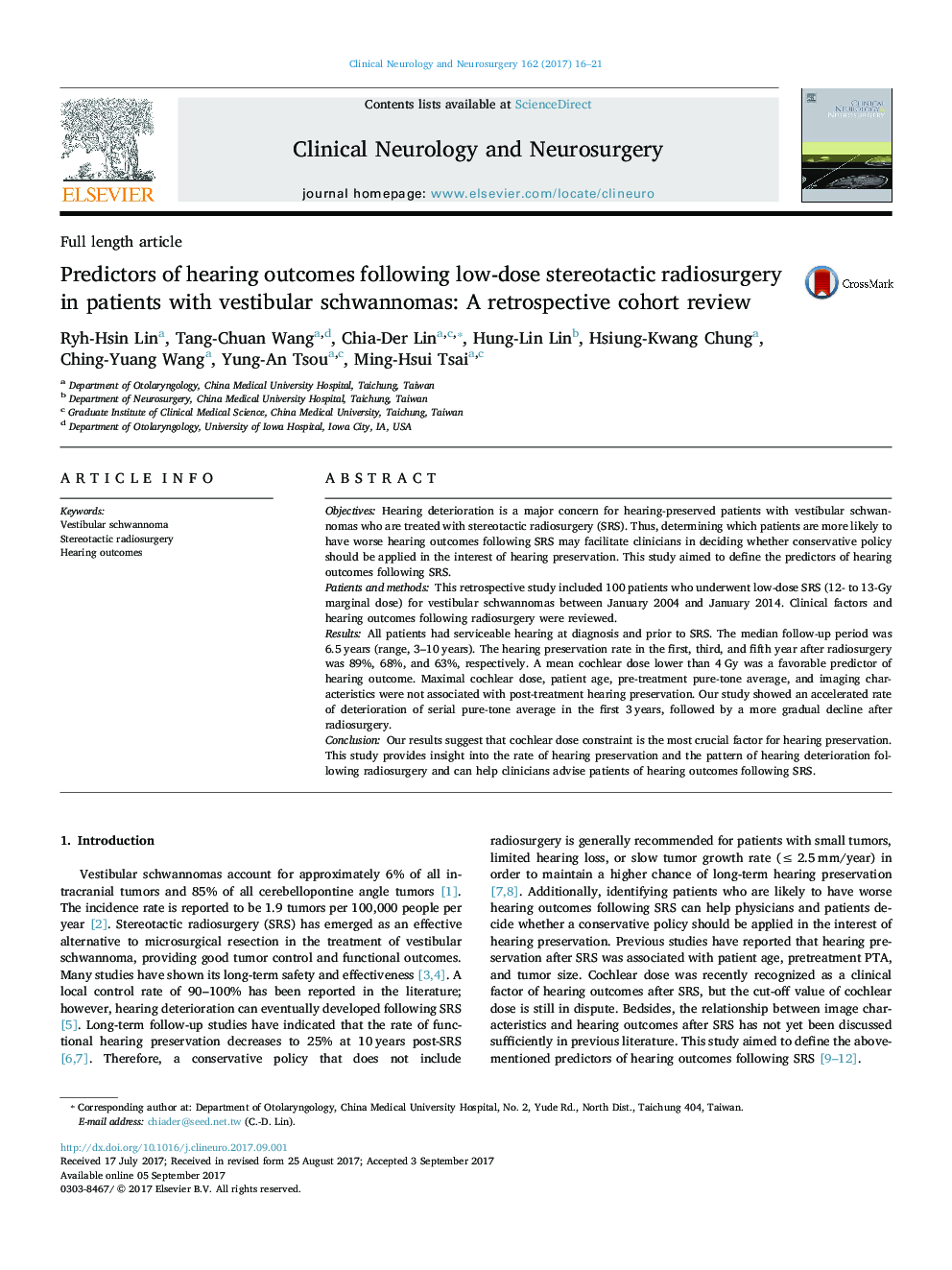| کد مقاله | کد نشریه | سال انتشار | مقاله انگلیسی | نسخه تمام متن |
|---|---|---|---|---|
| 5626912 | 1579660 | 2017 | 6 صفحه PDF | دانلود رایگان |
- The median follow-up period was 6.5Â years (range, 3-10Â years).
- An accelerated rate of deterioration of serial PTA in the first 3Â years, followed by a more gradual decline after SRS.
- A mean cochlear dose lower than 4Â Gy was a favorable predictor of hearing outcome.
- Maximal cochlear dose, age, baseline PTA, and imaging characteristics were not associated with hearing preservation.
- This study provides insight into the rate of hearing preservation and the pattern of hearing deterioration after SRS.
ObjectivesHearing deterioration is a major concern for hearing-preserved patients with vestibular schwannomas who are treated with stereotactic radiosurgery (SRS). Thus, determining which patients are more likely to have worse hearing outcomes following SRS may facilitate clinicians in deciding whether conservative policy should be applied in the interest of hearing preservation. This study aimed to define the predictors of hearing outcomes following SRS.Patients and methodsThis retrospective study included 100 patients who underwent low-dose SRS (12- to 13-Gy marginal dose) for vestibular schwannomas between January 2004 and January 2014. Clinical factors and hearing outcomes following radiosurgery were reviewed.ResultsAll patients had serviceable hearing at diagnosis and prior to SRS. The median follow-up period was 6.5Â years (range, 3-10Â years). The hearing preservation rate in the first, third, and fifth year after radiosurgery was 89%, 68%, and 63%, respectively. A mean cochlear dose lower than 4Â Gy was a favorable predictor of hearing outcome. Maximal cochlear dose, patient age, pre-treatment pure-tone average, and imaging characteristics were not associated with post-treatment hearing preservation. Our study showed an accelerated rate of deterioration of serial pure-tone average in the first 3Â years, followed by a more gradual decline after radiosurgery.ConclusionOur results suggest that cochlear dose constraint is the most crucial factor for hearing preservation. This study provides insight into the rate of hearing preservation and the pattern of hearing deterioration following radiosurgery and can help clinicians advise patients of hearing outcomes following SRS.
Journal: Clinical Neurology and Neurosurgery - Volume 162, November 2017, Pages 16-21
